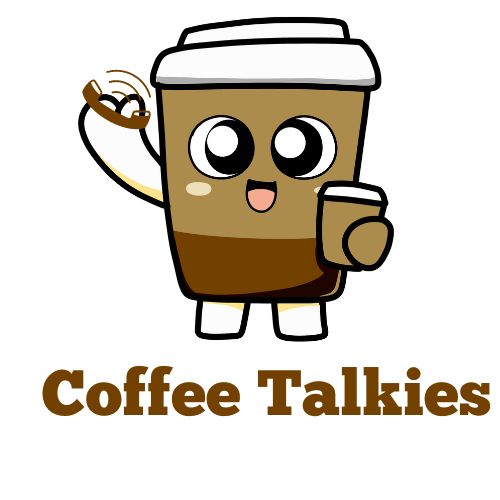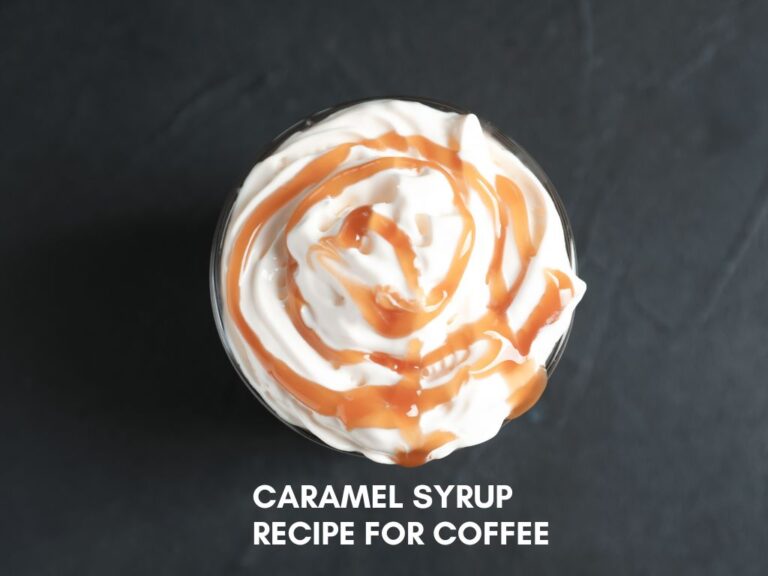Must-Have Coffee Shop Equipment: Your Ultimate Startup Checklist
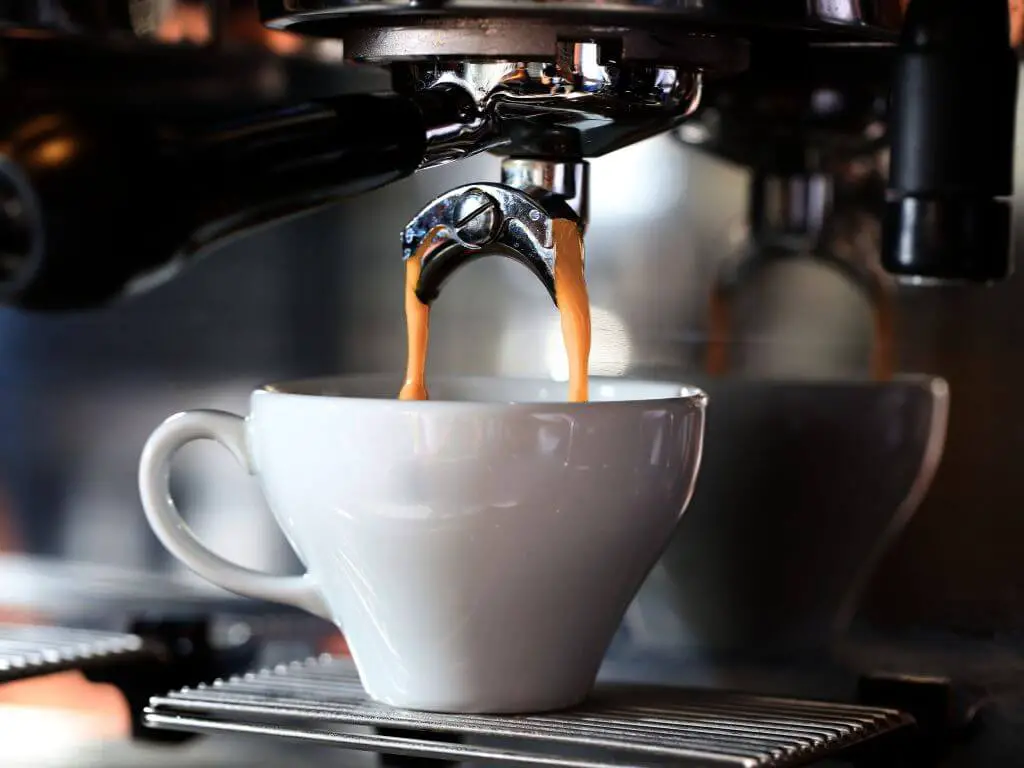
Opening a coffee shop is an exciting venture that lets you combine your love of coffee with a dynamic business opportunity. Coffee culture has seen a tremendous rise, with more and more people seeking unique, quality coffee experiences in comfortable, inviting spaces. Whether you’re dreaming of a small neighborhood café or a bustling downtown coffee bar, one thing is certain: having the right equipment is essential to creating a successful coffee shop.
From crafting the perfect espresso shot to serving a frothy cappuccino or an iced cold brew, every detail matters. Investing in the right tools helps maintain product consistency, improves service efficiency, and enhances customer satisfaction. In this guide, we’ll walk through the essential equipment needed to start a coffee shop and help you make informed choices to set up your café for success.
Coffee Brewing Essentials
To serve high-quality coffee that keeps customers coming back, you need to start with the right brewing equipment. Here’s an overview of the essential tools for crafting excellent coffee:
1. Espresso Machine
The espresso machine is the heart of any coffee shop. It’s the tool that pulls espresso shots, the foundation for many popular drinks like lattes, cappuccinos, and americanos. Choosing the right espresso machine is crucial, as it directly affects your drink quality and barista workflow.
Key Features to Look For:
- Capacity: Select a machine that can handle your anticipated volume. A high-capacity machine is essential if you expect a busy shop.
- Reliability: Quality machines are more reliable and produce consistent results, a must for customer satisfaction.
- Ease of Use: Depending on your staff’s skill level, you may want to opt for a semi-automatic machine for more control or a fully automatic machine for efficiency.
Types of Espresso Machines:
| Type | Description |
|---|---|
| Manual | Requires full barista control; best for experienced staff. |
| Semi-Automatic | Provides some automation; allows for more barista input. |
| Automatic | Reduces manual steps; a good balance of control and convenience. |
| Super-Automatic | Fully automated; ideal for speed and consistency, though less customizable. |
2. Coffee Grinder
A quality grinder is essential for freshly ground coffee, which significantly impacts the flavor and aroma. Freshly ground beans retain oils and aromatics that are lost in pre-ground coffee.
Key Features to Look For:
- Consistency: A good grinder ensures uniform coffee grounds, essential for balanced extraction.
- Adjustability: Ability to adjust grind settings to suit various brewing methods.
- Capacity: If your shop will be high-volume, choose a grinder that can handle large quantities without overheating.
Types of Grinders:
- Burr Grinders: Known for producing even grounds and better flavor extraction. Highly recommended for coffee shops.
- Blade Grinders: Less consistent in grind size; typically not recommended for commercial use.
3. Coffee Brewers (for Drip Coffee)
Offering drip coffee gives customers a convenient, satisfying alternative to espresso-based drinks. This equipment allows you to brew coffee in larger quantities, ideal for self-serve or quick-service environments.
Types of Coffee Brewers:
- Batch Brewers: Efficient for brewing larger amounts quickly. Consider one with adjustable settings for flavor control.
- Pour-Over Stations: This manual method gives baristas control over the brewing process, popular for specialty coffee.
Key Considerations:
- Size: Choose a brewer that fits your countertop space and meets your expected demand.
- Brewing Speed: A faster brewer is crucial for busy times.
- Ease of Cleaning: Select a model that’s easy to disassemble and clean to save time during busy hours.
4. Pour-Over Equipment
For shops focusing on specialty coffee, pour-over equipment can enhance the coffee experience by allowing for more control over flavor. This method is especially appreciated by coffee aficionados who enjoy a carefully crafted cup.
Necessary Tools:
- Pour-Over Kettles: Gooseneck kettles allow for precise water flow.
- Scales: Ensures accuracy in coffee-to-water ratios.
- Filters: Choose from paper, cloth, or metal filters, each imparting a unique flavor profile.
Benefits of Pour-Over:
- Customizable brewing time, temperature, and water flow, which can bring out the best in specialty coffee beans.
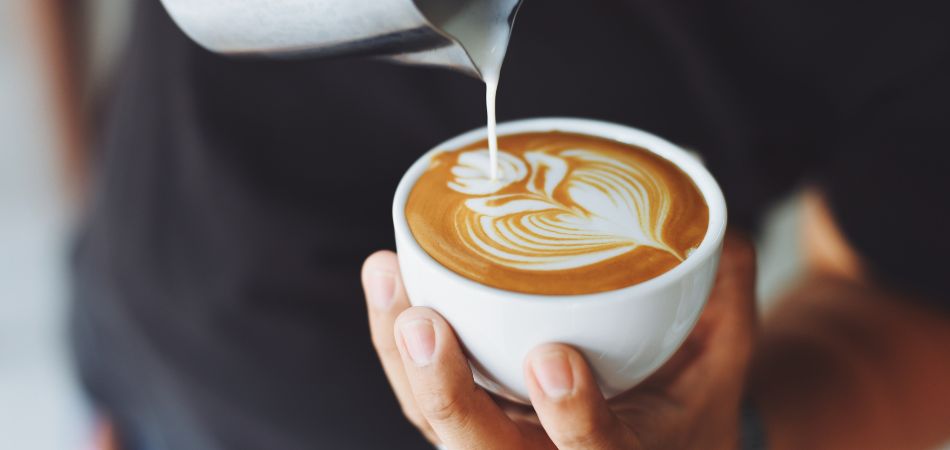
Milk and Beverage Preparation Tools
Alongside great coffee, many customers expect a variety of milk-based and blended beverages. Having the right equipment for preparing these drinks ensures smooth service and high-quality results. Here’s what you’ll need:
1. Milk Frother and Steam Wand
Milk-based drinks like lattes, cappuccinos, and flat whites are customer favorites, making a reliable milk frother or steam wand essential. The quality of your frother or steamer influences the texture and temperature of the milk, directly impacting the drink’s flavor and presentation.
Key Points to Consider:
- Integrated vs. Standalone: Some espresso machines come with built-in steam wands, while standalone frothers are also available.
- Foam Control: Look for a steam wand that offers adjustable steam pressure, allowing for control over foam density.
- Ease of Cleaning: Regular cleaning of steam wands is crucial for hygiene and maintaining milk quality.
2. Blenders
Blenders are essential if your menu includes iced or blended drinks, such as frappés, smoothies, or other refreshing beverages. A good commercial blender should be durable, powerful, and efficient to withstand frequent use.
Key Features to Look For:
- Noise Level: Some blenders are very loud, so consider models with noise-reducing enclosures to maintain a pleasant ambiance.
- Durability: Choose a heavy-duty blender built for high use.
- Blending Capacity: Select a blender with a pitcher size that fits your shop’s needs, especially during peak hours.
3. Refrigeration
Refrigeration is essential for keeping milk, cream, and other perishable ingredients fresh. It’s also useful for storing syrups, cold brew concentrates, and other drink components.
Types of Refrigeration Equipment:
- Under-Counter Refrigerators: Save space and keep milk easily accessible for baristas.
- Display Refrigerators: Useful if you also offer pre-packaged beverages or grab-and-go items.
- Freezers: If you serve frozen items, consider a small freezer for ice cream or frozen fruit.
Tips for Choosing Refrigeration:
- Consider your available space and prioritize units that maximize efficiency.
- Look for energy-efficient models to save on utility costs.
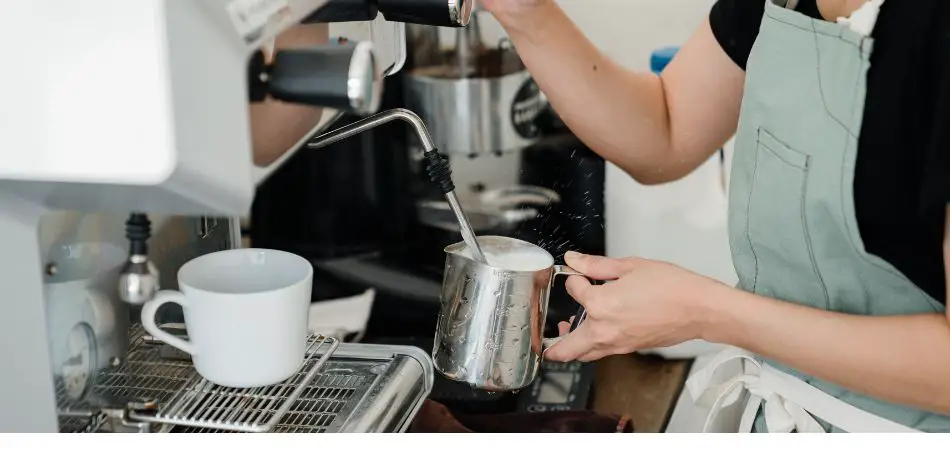
Cold Brew and Iced Coffee Equipment
Cold brew and iced coffee are increasingly popular, especially in warmer months, making dedicated equipment for these drinks a smart addition to your coffee shop setup.
1. Cold Brew System
Cold brew has a unique, smoother flavor profile that appeals to many customers. Offering cold brew in your shop requires a setup that can produce and store the beverage in large quantities.
Key Features to Look For:
- Batch Brewing: Choose a cold brew system that can handle large batches to save time and meet demand.
- Storage Solutions: Invest in containers that keep the cold brew fresh and easily accessible for pouring.
2. Iced Coffee Maker or Dispenser
Iced coffee requires slightly different preparation and storage methods compared to cold brew. If you plan to serve a large volume of iced coffee, consider equipment specifically designed for this purpose.
Options for Iced Coffee Preparation and Storage:
- Brewers with Iced Coffee Settings: Some machines allow you to brew directly over ice, saving time.
- Iced Coffee Dispensers: Keep iced coffee cold and ready to serve, similar to cold brew systems.
Serving Tools and Accessories
Once you’ve brewed the perfect coffee, the next step is serving it to customers in an appealing and efficient manner. The right serving tools and accessories enhance the customer experience while ensuring smooth operations behind the counter. Let’s take a look at the essential serving tools for your coffee shop.
1. Cups, Mugs, and To-Go Containers
The type of cups, mugs, and to-go containers you choose plays an important role in customer experience. Whether they are sipping in your café or grabbing a coffee on the go, providing durable, aesthetically pleasing drinkware is key to creating a memorable experience.
Key Considerations:
- Material: Ceramic mugs are ideal for sit-down customers and are known for retaining heat, while disposable paper cups are necessary for to-go orders. Consider offering eco-friendly options like biodegradable cups and lids.
- Design: Your branding should be reflected in your drinkware. A well-designed logo on cups or mugs creates brand recognition.
- Size Variety: Offer different sizes for a variety of drinks, including espresso cups, small and large mugs, and takeaway cups.
Eco-Friendly Options:
- Reusable cups can encourage customers to bring their own, promoting sustainability.
- Biodegradable or compostable containers are becoming more popular, helping you cater to environmentally-conscious customers.
2. Coffee Filters and Drippers
If your shop serves drip coffee, having quality filters and drippers is essential. These tools influence the taste of your coffee and are necessary for brewing.
Key Considerations:
- Filters: Paper filters are most common, but metal and cloth filters are also available for a more sustainable option.
- Drippers: For manual brewing methods, drippers like the Chemex or Hario V60 allow baristas to control the coffee-to-water ratio, providing a custom brew for customers who appreciate a more refined cup.
Sustainability Tip: Consider offering reusable filters as an option for customers who prefer environmentally-friendly alternatives.
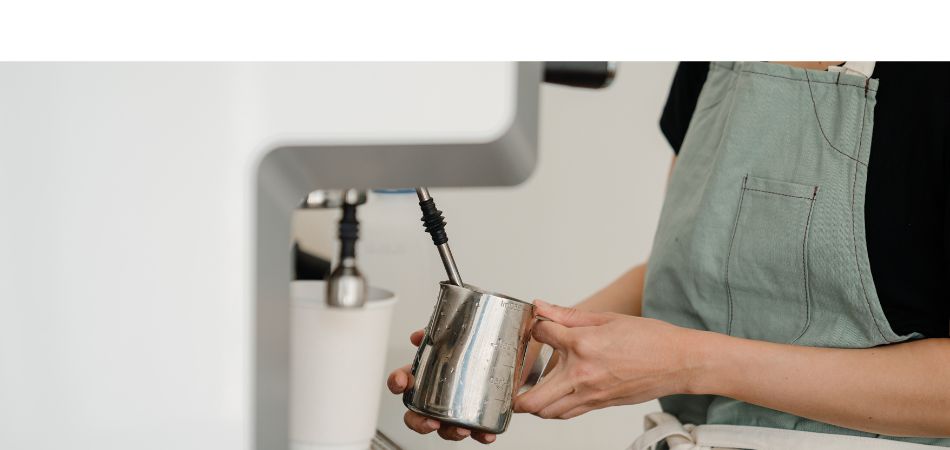
Food Preparation Equipment (Optional)
Many coffee shops also offer food items like pastries, sandwiches, or light snacks to complement their coffee menu. If you plan on adding food to your menu, here’s what you’ll need.
1. Oven or Toaster
An oven or toaster is essential if your coffee shop serves pastries, bagels, sandwiches, or other quick bites. Depending on your menu, you may need a convection oven, a toaster, or even a sandwich press for preparing hot food items.
Key Considerations:
- Convection Oven: Ideal for baking pastries, heating sandwiches, or preparing snacks quickly and evenly.
- Toaster: Perfect for a simple selection of bread, bagels, or pastries.
- Sandwich Press: Great for heating paninis or grilled sandwiches, adding a professional touch to your food offerings.
2. Refrigeration and Display Cases
To keep your perishable food items fresh and accessible, refrigeration and display cases are necessary. A fridge is essential for storing ingredients, while a display case is perfect for showcasing pastries, cakes, or grab-and-go items.
Key Considerations:
- Refrigerators: Used to store ingredients such as dairy, meats, and vegetables for sandwiches or salads.
- Display Cases: Clear cases allow customers to see the food options, which can encourage impulse buys. Make sure the case is temperature-controlled to keep pastries fresh.
- Energy Efficiency: Choose energy-efficient models to keep operational costs low.
Cleaning and Maintenance Tools
Keeping your coffee shop clean is essential for both customer satisfaction and the longevity of your equipment. A clean and well-maintained environment also ensures you comply with health and safety regulations.
1. Dishwasher and Sink Setup
Washing cups, plates, and utensils quickly and efficiently is vital, especially during busy hours. A commercial dishwasher helps streamline this process, saving time and labor. Depending on your space, you may need a single or three-compartment sink for proper sanitation.
Key Considerations:
- Dishwasher: Invest in a commercial-grade dishwasher that can handle high volumes. It should be fast, efficient, and capable of cleaning espresso cups without damaging delicate items.
- Sink Setup: Ensure you have a dedicated space for handwashing and sanitizing utensils, plates, and coffee equipment.
2. Cleaning Supplies
Regular cleaning is essential for maintaining the quality of your coffee and the lifespan of your equipment. Invest in specific cleaners designed for espresso machines, grinders, and other tools.
Key Supplies:
- Espresso Machine Cleaner: Specialized cleaners that break down coffee oils and residues from espresso machines.
- Grinder Cleaner: To keep grinders running smoothly, ensuring consistent grind sizes.
- Surface Cleaners: All-purpose cleaners for countertops, tables, and floors.
Importance of Regular Maintenance: A well-maintained coffee shop is more efficient, provides a better customer experience, and extends the lifespan of your equipment.
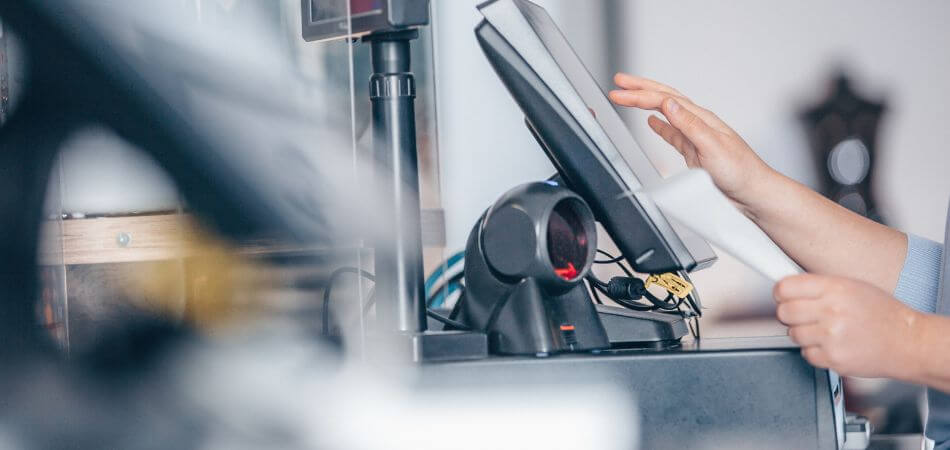
Point of Sale (POS) System and Technology
A good Point of Sale (POS) system is essential for running a smooth operation, keeping track of sales, and offering great customer service. Technology can also improve efficiency, making it easier to handle transactions and manage inventory.
1. Point of Sale (POS) System
A POS system is crucial for processing orders, handling payments, and tracking inventory. It helps streamline customer service and back-end operations.
Key Features to Look For:
- Ease of Use: Choose a POS system that is user-friendly for both your baristas and cashiers.
- Integration: The ability to integrate with other systems, such as loyalty programs, inventory tracking, and financial software, can save time and reduce errors.
- Payment Flexibility: Ensure your POS system accepts all major payment methods, including credit cards, mobile payments, and digital wallets.
2. Wi-Fi Router
In today’s coffee shop culture, offering free Wi-Fi is often a must. Whether customers are working remotely or simply browsing, reliable internet access can make your coffee shop a popular spot.
Key Considerations:
- Router Capacity: Choose a router that can handle a high number of connected devices without slowing down.
- Security: Set up a secure network to protect your business and customers’ personal information.
Furniture and Decor
The right furniture and decor can set the tone for your coffee shop and make it a welcoming place where customers feel comfortable. A cozy, well-designed environment encourages people to stay longer, return more often, and recommend your shop to others. Let’s look at the essential elements for creating a great coffee shop atmosphere.
1. Seating and Tables
Comfortable seating is a must for creating a space where people can relax, work, or socialize. The type of seating you choose should fit your style, target customers, and the size of your shop.
Key Considerations:
- Seating Style: You can opt for cozy armchairs for a relaxed, casual vibe or sturdy wooden chairs and tables for a more traditional coffeehouse feel. A mix of seating options, such as booths, chairs, and communal tables, works well to cater to different group sizes and preferences.
- Table Size and Layout: Choose tables that are the right size for your space and can comfortably seat your customers. Small tables are great for solo coffee drinkers, while larger tables are ideal for groups or people working on their laptops.
- Space Efficiency: Maximize the use of your floor plan by choosing stackable or foldable chairs and tables. This flexibility allows you to rearrange for events or busy times.
2. Decorative Items and Lighting
Decor and lighting contribute significantly to the overall ambiance of your coffee shop. The right lighting can create a warm, inviting atmosphere, while stylish decor can elevate the aesthetic and attract customers.
Lighting:
- Ambient Lighting: This provides general lighting and sets the mood. Consider pendant lights, chandeliers, or soft overhead lighting.
- Task Lighting: Task lighting can be placed over specific areas, such as counters or reading areas.
- Accent Lighting: Use accent lighting to highlight your shop’s best features, like a feature wall or artwork.
Decor:
- Wall Art: Art can add personality and style. Opt for local artists or coffee-related artwork to stay on theme.
- Plants: Incorporating greenery can make the space feel cozy and fresh. Small indoor plants are great for tables, while larger plants can brighten up corners.
- Branding: Consistent branding throughout your decor, from wall designs to menus, enhances brand recognition and makes your space unique.
Frequently Asked Questions On Starting A Coffee Shop Equipment Needs
What Are The Needs To Start A Coffee Shop?
To start a coffee shop, you need a solid business plan, sufficient funding, a suitable location, necessary permits and licenses, and high-quality coffee-making equipment. Quality beans, skilled baristas, and a cozy, inviting ambiance are also essential.
What Do You Need For A Coffee Setup?
For a complete coffee setup, you need a coffee maker or espresso machine, fresh coffee beans, a grinder, filters (if required), water, and mugs. Optional items include a scale, tamper, and milk frother for specialty drinks.
Is It Hard To Run A Coffee Shop?
Running a coffee shop can be challenging. It requires business acumen, adeptness at managing finances, customer service skills, and a passion for coffee. Long hours and competition also add to the difficulty.
How Much Does It Cost To Run A Coffee Shop Per Month?
The monthly cost to run a coffee shop can vary widely, ranging from $3,000 to over $25,000, depending on location, size, and operational expenses.
Conclusion
Embarking on your coffee shop venture is an exciting journey. The right equipment sets the stage for success. Ensure you have a curated list tailored to your cafe’s unique flavor. Remember, investing in quality machines brews customer satisfaction and business growth.
Here’s to pouring the perfect cup!
